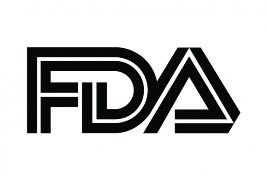 On June 24, the FDA issued three final guidances and a draft guidance for industry to clarify the use of nanotechnology in FDA-regulated products--a decision that will affect the drug delivery arena as it becomes more dependent on nano-engineering.
On June 24, the FDA issued three final guidances and a draft guidance for industry to clarify the use of nanotechnology in FDA-regulated products--a decision that will affect the drug delivery arena as it becomes more dependent on nano-engineering.
The first guidance lays out the agency's stance on identifying the application of nanotechnology, in an effort to examine materials in the nanoscale range that "may be used for functional effects such as increased bioavailability, decreased dosage, or increased potency of a drug product, decreased toxicity of a drug product, better detection of pathogens" or similar phenomena, the document says.
The guidance, most importantly for industry, says that the FDA considers two points when determining if a regulated product involves the application of nanotechnology. The first is whether a material or end product is engineered to have at least one external dimension, or an internal or surface structure, in the nanoscale range. The second is whether that material or end product is engineered to exhibit properties--physical, chemical or biological--attributable to its dimensions, even if the dimensions fall outside the nanoscale range, which the FDA caps at 100 nanometers.
While the second guidance focuses on the manufacture of cosmetic products, it's emblematic of the FDA's new stance on the manufacture of nanotechnology, urging industry stakeholders to take a look at potential safety issues in products and develop a framework for safety. As expected, "Manufacturers must ensure that the product is not misbranded or adulterated." It's important to note the agency believes manufacturers should "give particular consideration to the fact that a material at nanoscale may show changes in, or have novel, physicochemical properties, behaviors, and/or effects that could be different from a larger scale material with the same chemical composition," highlighting the agency's ongoing effort to recognize the burgeoning science field.
These two industry guidances come hot on the heels of some astonishing discoveries in the nanotechnology field. Last week, researchers at the University of California, Santa Barbara used light and electromagnetics to concoct glowing particles that show the delivery of cancer drugs to tumors. Earlier this month, researchers in Singapore developed an injectable nanotech solution for glaucoma that encapsulates an already-approved glaucoma drug and delivers it to the eye over an extended period of time.
The FDA's third and final guidance looks at emerging nanotechnology in approved foods--such as color additives--while the draft guidance aims to do the same for animal food. Comments for the draft guidance are requested by Sept. 10.
- here's the FDA news release
- here's the first industry guidance on identification
- and the second guidance on manufacturing
- here's the third on food and additives
- and here's the draft guidance on animal food (PDF)